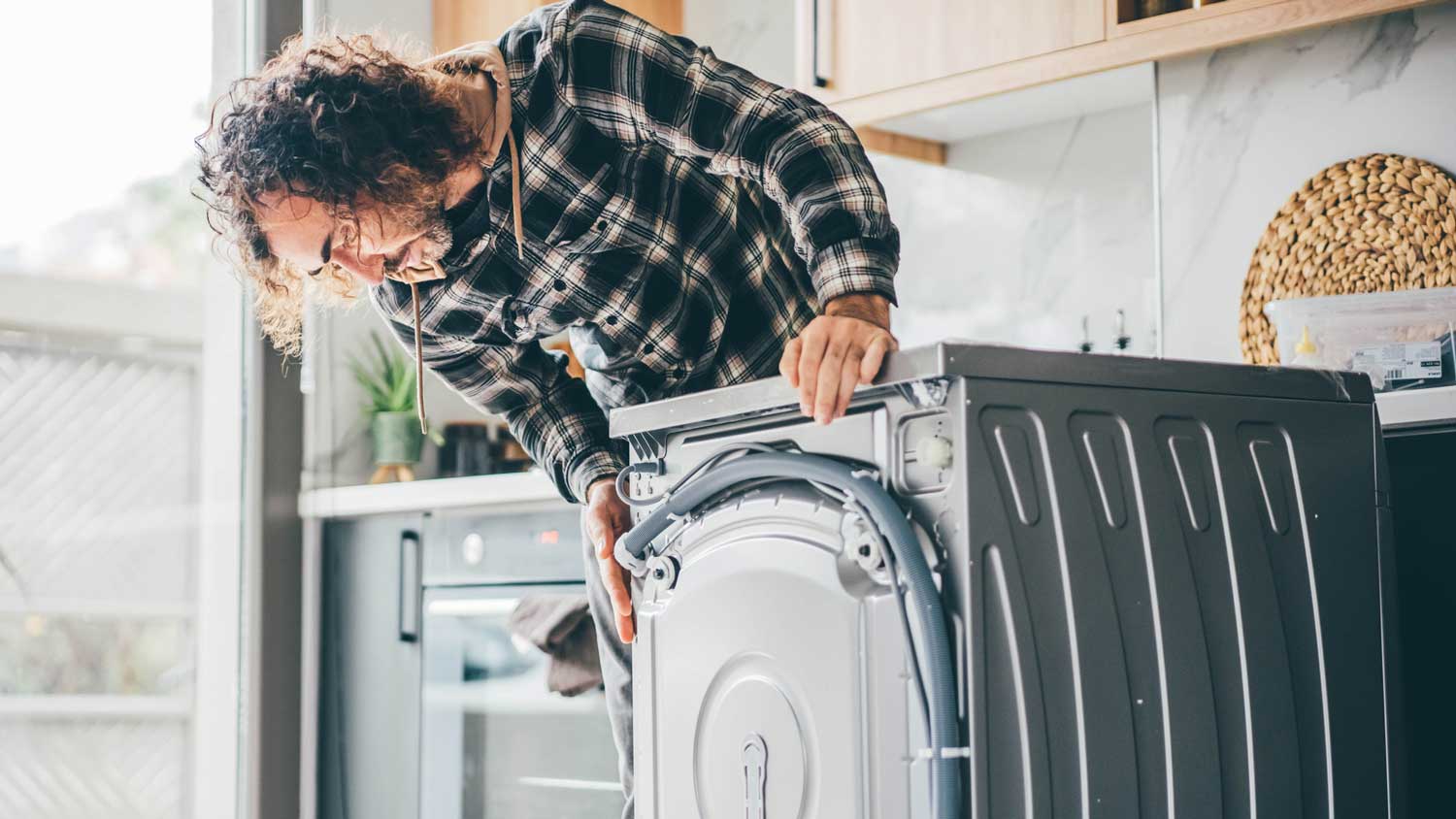
Appliance removal costs can vary widely. Learn the average cost of appliance removal and the factors that affect how much you pay.
Here’s what to do when it’s time to retire your old washer and dryer


When your washer and dryer stop working effectively, and it’s time to replace them, you don’t want the old ones taking up valuable space in your home. Find out how to dispose of a washer and dryer without having to haul these heavy appliances on your own.
These hard-working appliances can take up a lot of space, so once they’re no longer needed, you’ll want to get rid of them so they aren’t in the way. Unfortunately, you can’t just throw them in with your regular trash collection, and some areas have strict rules about how to handle appliance disposal.
Failure to follow guidelines and improperly disposing of these machines can cause damage to the surrounding environment and lead to fines or citations and. Disposing of your washer and dryer properly ensures you’re in compliance with regulations and won’t cause any undue harm to the environment.
Before disposing of your washer and dryer, you’ll need to make sure they’re fully disconnected and ready for removal. To prepare for disposal, follow these steps:
Unplug all power cords.
Turn off the water supply to the washer and disconnect the washer’s water supply hose.
Disconnect the washer’s drain hose.
If you have a gas dryer, call a qualified technician to cap off the gas supply and disconnect the gas connection.
Disconnect the dryer vent hose.
Getting rid of an old washer and dryer isn’t the easiest task, but you have multiple options to choose from that require varying amounts of work on your part. Find out what services are available in your area and what works best for your situation.
If the units are in decent condition, consider listing them for sale to make a few bucks. As a bonus, you can ensure the buyer comes to pick them up, thus saving you the hassle of transport. There are plenty of places to list appliances for sale, like Facebook Marketplace, Craigslist, OfferUp, and more. Be honest in the posting, detailing any issues that could impact performance, and be wary of scammers when selling stuff online. If an offer sounds too good to be true, it is.

If you want to get the appliances out of your home and don’t care too much about making money, list them for free on the above-mentioned platforms. Look for your neighborhood’s “Buy Nothing” group on Facebook, or talk to neighbors to put the feelers out. While this is most effective if the units are in proper working order, give it a shot even if your appliances require repair—you never know. The most important part of this whole process is that the person makes plans to actually come and pick up the washer and dryer.
Along the same lines, try donating the appliances to a local organization that accepts washer and dryer units. These appliances are always in high demand; most donation centers should take them with caveats. They should be in proper working order, so call ahead if there are issues requiring repairs, and beware that not many of these organizations will send someone out to pick up the units, so you are likely on the hook for transport. Relevant donation-based organizations include Goodwill, Habitat for Humanity, and ReStore. However, your city likely has a few local donation centers unaffiliated with the big three—this is a decent option for disposing of any large appliance.
Your city or local municipality likely offers a service called bulk pickup day, usually once or twice a month. This is specifically for disposing of appliances and large items that won’t fit inside trash bins. Washer and dryer units are uniquely cumbersome, so not every city will come and pick up these particular appliances. Some may require you to transport them to a transfer station, while others mandate specific bulk pickup appointments. In other words, call a local regulatory agency before you exert precious calories to haul the washer and dryer to the curb. Also, don’t haul the items out too early, as this could violate a city-wide code. Instead, bring them out early on the day of pickup.

This is an easy way to dispose of your washer and dryer, though more budget-friendly options exist. Contact a local junk removal company and make an appointment for a pickup. They’ll send a team inside your home and haul the appliances away right before your eyes. However, hiring a junk removal service isn’t free—it can cost between $80 to $200 in appliance removal costs to dispose of a washer and dryer, plus the cost of a tip for the junk removers. These companies haul away more than just laundry appliances, so if you are wondering how to dispose of furniture, you’ll likely save some cash if you have them pick up multiple items simultaneously.
Try a local scrap yard if you can’t sell your appliances via traditional means due to repair issues or cosmetic defects. These businesses not only accept broken washers and dryers but will also pay a few bucks when taking them off your hands. You won’t get rich, mind you, as the average payment is $8 to $10 for the washer and $6 to $8 for the dryer. These places aren’t repairing and reselling the appliances; instead, they break them down into parts and harvest the metal.
You can enlist the retailer or original manufacturer of the units to help dispose of them. Many retailers, for instance, haul away old appliances when delivering new ones. Home Depot and Best Buy provide this service, though they charge a small fee of around $25 for disposal. Call up the original retailer and ask about any removal services.
As for the original manufacturer, many companies operate their own recycling centers as part of larger efforts toward eco-consciousness. Check the manufacturer’s website to see if there are any drop-off centers near you.
When you’re deciding the best way to dispose of your washer and dryer, keep the following in mind:
Physical labor: If you’re unable to move heavy items, don’t have a dolly, or don’t have someone who can lend a hand, a labor-intensive method won’t work for you.
Appliance condition: Be honest about the condition of your washer and dryer. Selling or donating them isn’t a feasible option if they’re broken beyond repair.
Budget: The most convenient options will cost more, while low-cost methods will require a little heavy lifting on your part.
Washers and dryers can weigh anywhere between 100 and 300 pounds each, so DIY appliance disposal is only an option if you are able to move that much weight and have a vehicle that can transport them to a disposal facility.
If you’re looking for the most hands-off and convenient way to dispose of your washer and dryer, your best bet is to hire a local appliance removal company or junk hauler. These services will do all the heavy lifting for you, and you can be sure your appliances are being disposed of correctly.
From average costs to expert advice, get all the answers you need to get your job done.

Appliance removal costs can vary widely. Learn the average cost of appliance removal and the factors that affect how much you pay.

Junk removal costs depend on the volume and type of waste you need removed, but paying a professional saves you time and energy over hauling it yourself.

Removing a hot tub costs an average of $400. Learn what factors affect hot tub removal costs, including size, type of hot tub, and disposal method.

Trash hauling services are particularly helpful when disposing of large amounts of waste or hazardous materials.

In this guide, learn how to identify and dispose of hazardous waste safely.

Looking for ways to make getting rid of debris easier? Use these junk removal tips to save time, money, frustration, and your back.